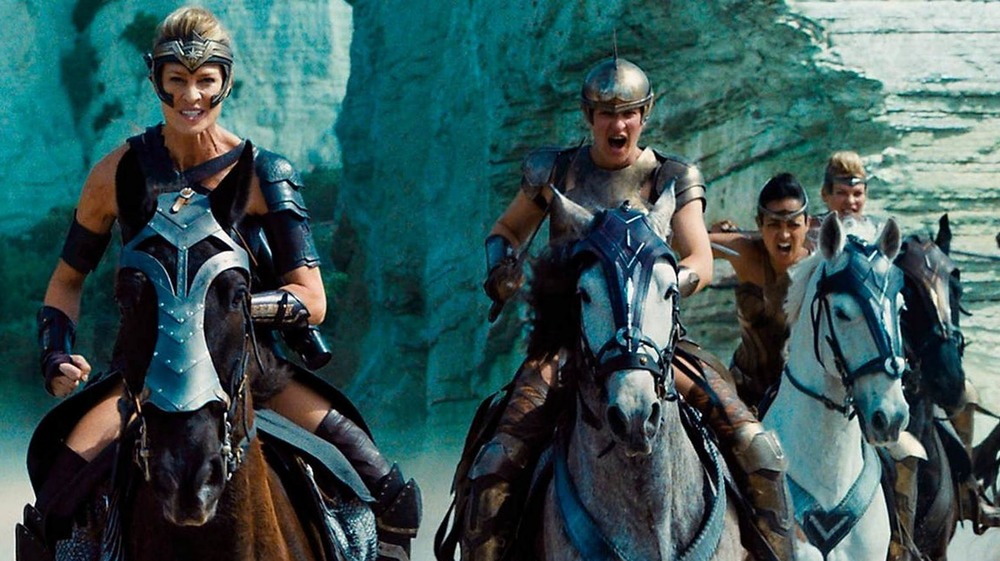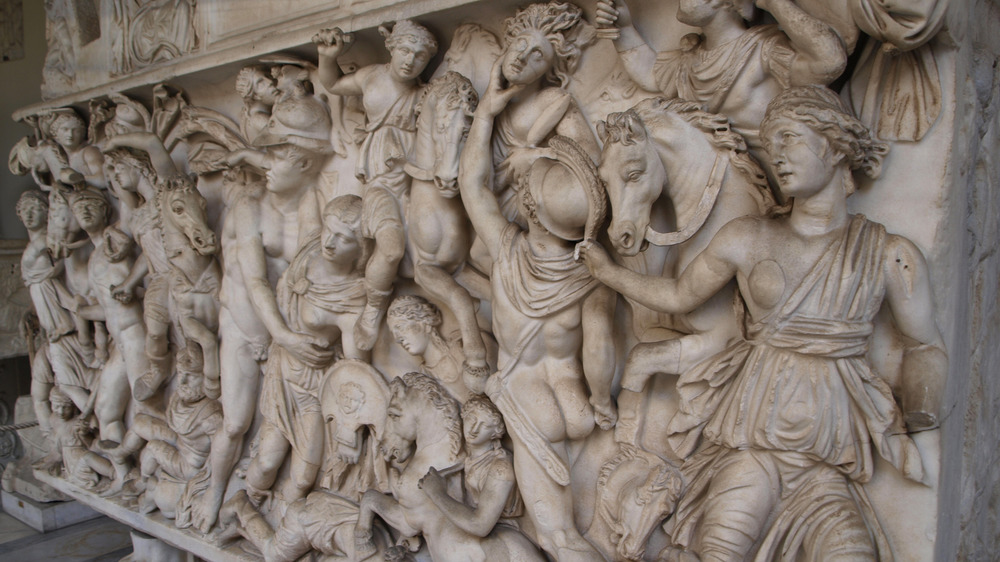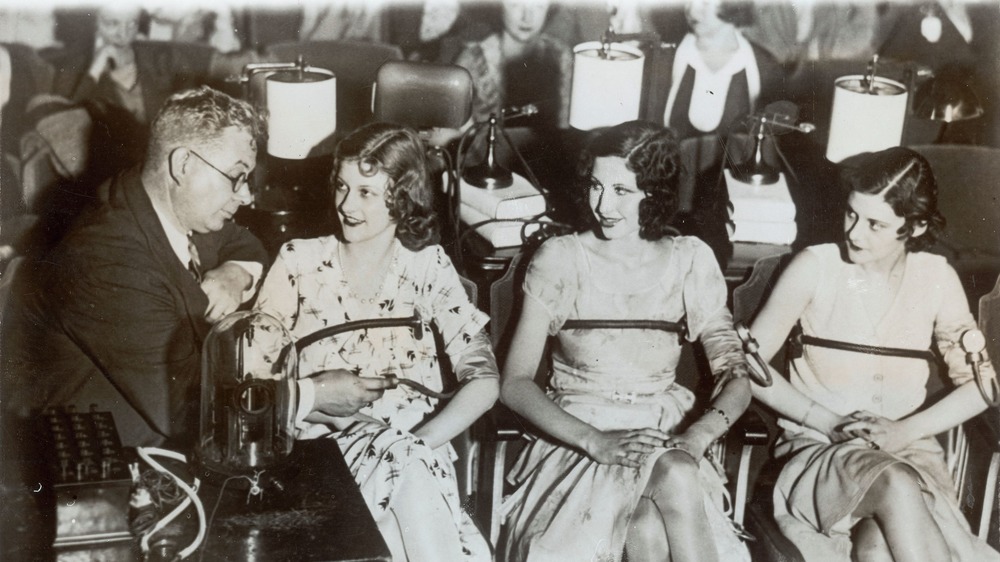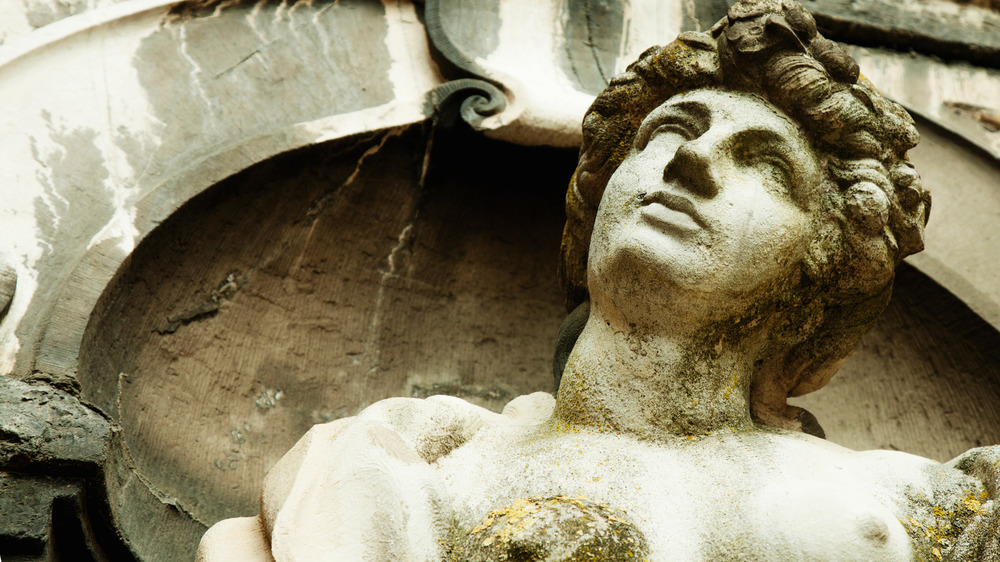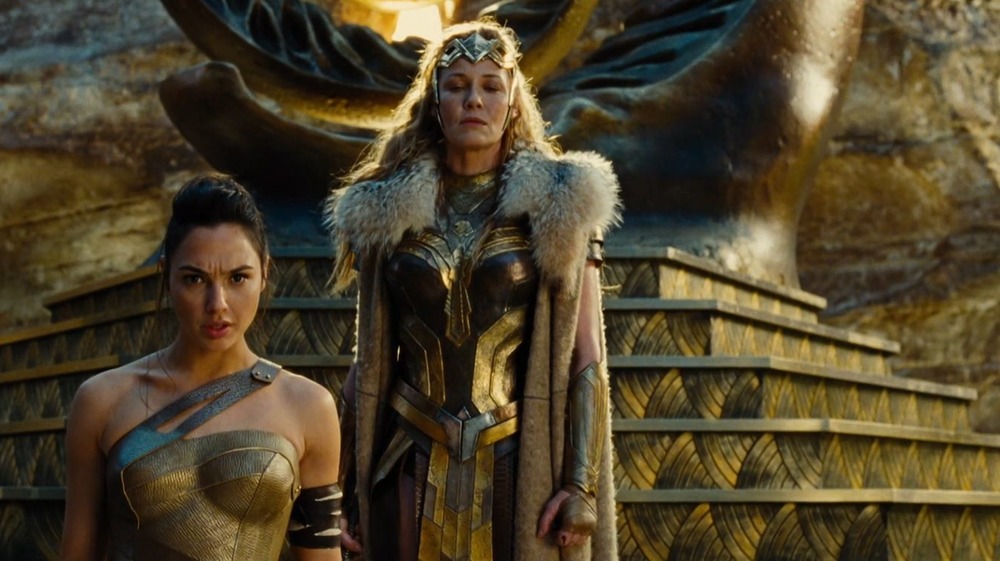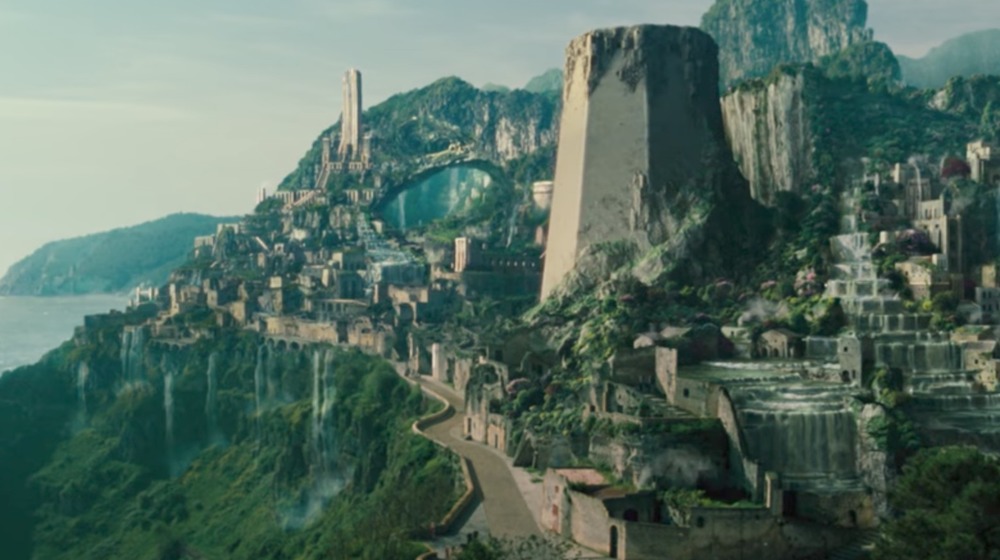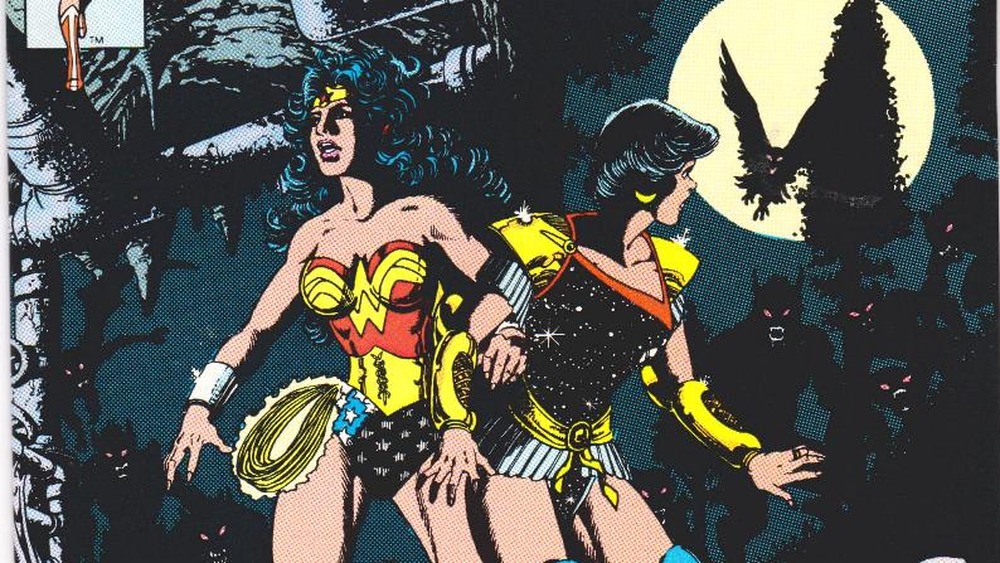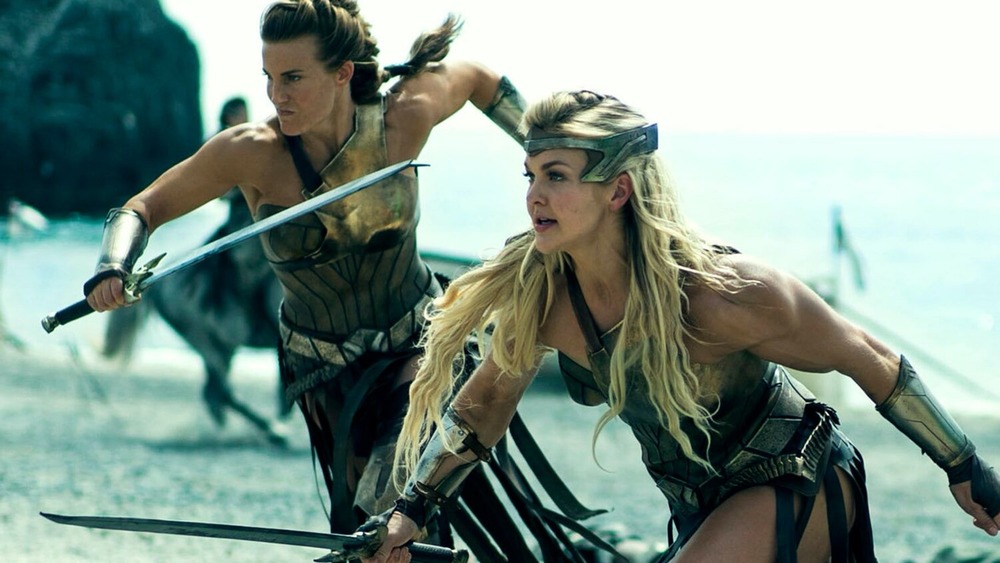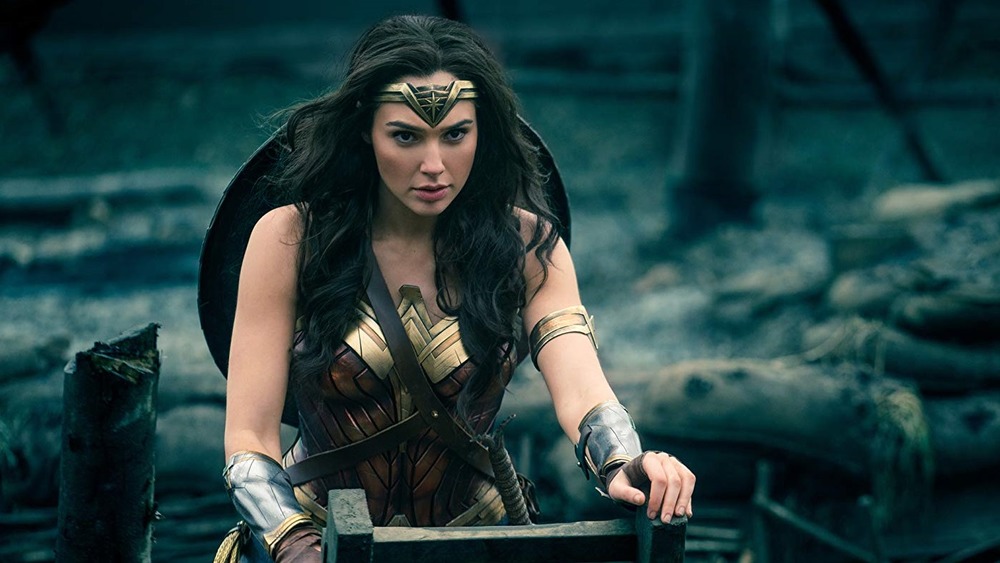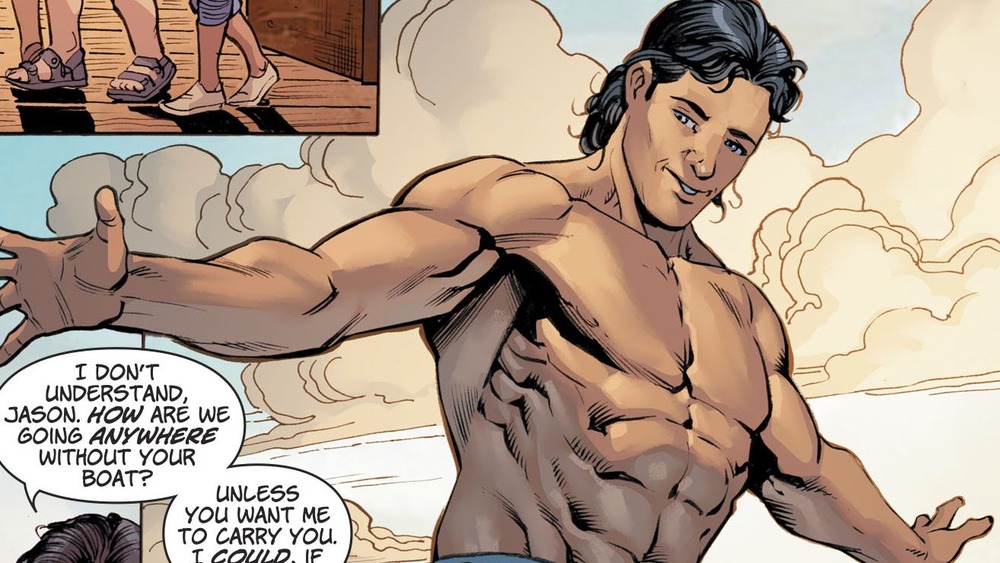The History Of DC's Amazons Explained
Though it took quite a while for fans to see her on the big screen, Wonder Woman is a critical part of the DC Universe. As a cornerstone character who helped carry DC through the Golden Age into its modern status as a many-tentacled entertainment behemoth, Diana Prince has been around for nearly every stage of DC's development. She fought Nazis with the rest of her cohorts during World War 2, had regular television adventures during the campy era of the Hulk and Batman series and has become a reliable box office draw in the age of superhero blockbusters.
But you don't get Wonder Woman or Diana Prince without the Amazons. The warrior women who raised Wonder Woman on the mythical island of Themyscira are a crucial part of who the heroine is. To understand Wonder Woman, you have to know a bit about the matriarchal and insular society that she left in order to help defend the wider world. With that in mind, we've put together a bit of an overview of one of DC's most interesting peoples.
Real-world inspiration
The Amazons weren't created out of whole cloth. Like many Golden Age comics creations, they were pulled from mythology. Early comics at Marvel and DC both were fascinated with Egyptology and Greek myth and the Amazons came directly from the latter tradition.
In Greek mythology, the Amazons were a tribe of fierce warrior women who lived in Asia Minor. They were ruled over by a series of queens who consorted with the gods of Mount Olympus. These warrior women were frequently depicted as living separately from other societies, particularly the men of other countries. Some versions of the stories involving Amazons have them regularly meeting with neighboring tribesmen at scheduled times, so that they can have children. Only girls were raised by the Amazons.
One famous queen of the Amazons was Hippolyta, the daughter of war god Ares, who was famously killed during Heracles' labors. In the DC Universe, Hippolyta is the co-ruler of the Amazons with her sister Antiope. She is both the leader of the Amazons in Themyscira and the mother of Wonder Woman.
Even the myth may have some basis in reality. Some scholars believe that the Amazons were based on Scythian warrior women, members of a nomadic tribe that ruled over large swaths of the Eurasian steppe during the period that many of these myths were recorded. Mass graves of warrior women found in the region seem to support this idea.
The life's work of William Marston
When psychologist and feminist William Marston was seeking out a perfect vector for his ideas about women and society, the Amazons came tailor-made. He was a firm believer in the superiority of the fairer sex and he used a strange medium to spread his theories: comic books. Looking around at the new generation of empowered women in the late '30s and early '40s, particularly his wife and their partner in a polyamorous relationship, Marston saw the type of people he believed should control society at large. He created the comic book Amazons and their no-so-subtly named Paradise Island to share his idea of what that better world could look like.
"Wonder Woman is psychological propaganda for the new type of woman who should, I believe, rule the world," Marston wrote at the time.
Much in the same way that Superman represented the perfect ideal of American ideas, Wonder Woman was an ambassador to "Man's World" in the comics and our own patriarchal society. She was "beautiful as Aphrodite, wise as Athena, swifter than Hermes, and stronger than Hercules" to show all the things women can be. And she had an entire island of intelligent and powerful women backing her up in a perfect, man-free society.
Created by Aphrodite herself
The original Amazons Of Marston's comics were created by Aphrodite, the Greek goddess of Love. Aphrodite crafted these women from clay as ideals of beauty and love, and they ruled peacefully over the nation of Amazonia. The greatest society on Earth was found here, and the culture that flourished that was deeply foreign to readers. Amazonia was so perfect that the concept of crime did not exist.
Women of Amazonia were raised to be warriors, with nearly all of the Amazon women coming to look like their classical Greek counterparts: fierce, tall and skilled at fighting in the off-chance that someone might try and try to take their country from them.
Marston also pulled from antiquity in his stories of outsider intrusion, bringing in the classic story of Heracles and showing it from the Amazonian angle, where he would rightly be thought of as a monster.
Attacked by Heracles
The first major invasion of Amazonia by men was led by Heracles. Though the Greek myth involved Heracles taking Queen Hippolyta's girdle as one of his incredible labors, Marston depicted the god as a man shamed. It was Heracles' pride that caused him to invade Paradise Island, as he grew tired of hearing that he wasn't strong enough to fight the Amazons. Like the myth, Hippolyta's girdle factored heavily into the confrontation. The power it granted her made her stronger than Heracles.
He was initially turned back by the Amazons, who then attempted to broker peace by having a feast with Heracles and his men. The army of Heracles and Theseus attacked during this feast after being welcomed into Amazonia. The Amazons were captured and taken as slaves by Heracles' men.
Aphrodite initially refused to help her creations, furious that they allowed themselves to be fooled by a man. However, Hyppolita's pleading eventually got through. Aphrodite helped the queen get her hands back on the girdle and use it to overpower Heracles and Theseus. The Amazons took the fleet of their captors and sailed for a new home.
An island paradise
Aphrodite shepherded the Amazons to Paradise Island (later renamed for the mythical homeland of the Amazons, Themyscira), where they agreed to live lives entirely separate from the larger world of Man. Aphrodite did not believe in destroying life as the goddess of beauty and love. She made her followers swear that they would not seek revenge on Heracles and Theseus as a condition of their release. (Still many of them murdered Heracles' followers wantonly after being freed.) Those who accepted Aphrodite's terms became the residents of Paradise Island.
All of the Amazonian women wore "bracelets of submission," symbols of their devotion to Aphrodite and reminders of what waited for them outside of their island. The warriors were raised from birth to view falling prisoner to a man as the gravest possible outcome. The iconic gold bands were a symbol of real-world women's status in society and the hope that they would break out of oppressive systems. (The bracelets also had quite a bit to do with Marston's own affinity for bondage.)
A nasty catch
In all versions of Wonder Woman, there is discord among the royal family. The original run of Wonder Woman comics portrayed Hippolyta's sister Antiope as a person who was jealous of Hippolyta's rule. She hatched a plot to overthrow her sister and was eventually killed in the continuity resetting "Crisis on Infinite Earths" storyline.
After the Crisis, Antiope was rethought and made less of a schemer. Still she differed from her sister in one crucial aspect. Though Hippolyta was game to go along with the goddesses' wishes that they not seek revenge, her sister was unwilling to forgive the torture, abuse and humiliation that she had suffered at the hands of Heracles and Theseus. She leads a force of vengeful Amazons in the hopes of finding and killing the remaining soldiers who sacked Themyscira. This contingent eventually settles in the Middle Eastern desert and becomes the Amazons of Bana Mighdall. For refusing the offer of the Olympians, these Amazons became mortal.
A dark new direction
After the Crisis on Infinite Earths, the Amazons' origin story went in a grim new direction. Following the general trend lines of '80s comic book writing, the primary-colored universe of Golden Age Wonder Woman got a little dingier and a bit more violent. The new origin story spread out the reason for their creation among several goddesses, instead of the Goddess of Love who was their original ruler.
In the new continuity, Athena, Demeter, Hestia, Artemis and Aphrodite team up to create the Amazons, in defiance of the wishes of Zeus and Ares. In contrast to the frequently bleak Greek myths, and the all too human failings of the Olympian gods, these goddesses wanted to create a pure force of good on the Earth. These superwomen would uphold the ideals of love and peace in their own society, serving as an example to all humanity. As an extra bit of poetic justice, the Amazons were crafted out of the souls of women who had met violent deaths at the hands of men. This noble goal was enshrined in the Code of the Amazons:
"We are a nation of women, dedicated to our sisters, to our gods, and to the peace that is humankind's right. Granted life by Gaea, the goddesses, and the souls of women past, we have been gifted with the mission to unite the people of our world with love and compassion. We are the Amazons, and we have come to save mankind."
Diana always leaves
In all versions of the Amazon story, Princess Diana chooses to leave. Wonder Woman was born on the island and is frequently depicted as the youngest Amazon. Because she never knew life in Amazonia, when the Amazons were citizens of another state in Man's World that frequently interacted with its neighbors, she is curious about life outside the island.
In the original continuity, Wonder Woman is allowed to leave the island after fighter pilot Steve Trevor crash lands there by mistake. In line with the patriotic tone of comics at the time, the Amazons decide that Steve must be returned so that he can continue to fight for the United States. Diana is allowed to accompany him on this mission as the only Amazon who has never set foot in Man's World.
During George Perez's run, she has to leave the island to face the Amazons' most bitter rival: Ares. As the god of war, his destructive influence on the world and humanity runs counter to all that the Amazons hold dear.
In The New 52, Diana was revealed as the daughter of Zeus and Hippolyta. This ran counter to all previous incarnations of Wonder Woman, where she was formed from the clay of Themyscira by her mother. Her status as a demigod leads to further adventures in the Greek mythology and she leaves the island both to train under Ares, take on the mantle of "War," and help her half-siblings fathered by the notoriously promiscuous Zeus.
Controversy
The New 52 also painted a lurid picture and controversial picture of Amazonian life. Rather than having Diana be the last Amazon, and granting all the women on the island the gift of immortality, the new story of the island involves ritualized mating to keep the island running.
The reboot established that Amazons left the island three times a century to mate with men. They would raid passing ships and conceive children with the men on board. All of those men were then murdered to keep the island and its women safe from the outside world. Obviously, this crass take rankled long-time fans, flying in the face of the idealized image of the Amazons. It was scrapped in the most recent DC Comics-wide reboot, dubbed "Rebirth."
Following "Rebirth," Diana's decision to leave was once again retconned. She leaves with Trevor after winning a competition, but is told by her fellow Amazons that she can never return to the island. She decides to go anyway in the hopes of finding her long-lost twin brother Jason.
